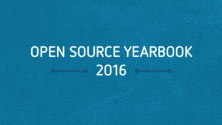If software is pervasive, shouldn't the people building it be from everywhere and represent different voices? The broadly accepted answer is yes, that we need a diverse set of developers and technologists to build the new digital world. Further, when you look at communities that thrive, they are those that evolve and grow and bring in new voices and perspectives. Because much of the software innovation happening today involves open source software, the open source community can be an entry point for new people in technology roles. This means that the open source community must evolve to stay relevant. There has never been a better time for the open source community to welcome new community members from under-represented groups than now, and the community is rising to the challenge. Efforts to increase diversity in open source are showing results, so let's look at a few examples:
1. Foundations and organizations are increasing outreach efforts.
Over the past few years, new foundations have been created to support open source projects. For example, multiple projects fall under the umbrellas of big foundations, such as the Linux Foundation and OpenStack Foundation. Besides being a home for projects, foundations are embracing their roles in curating and sharing best practices, creating on-ramps, and supporting new people in project communities.
The Linux Foundation and OpenStack Foundation provide scholarships, travel assistance, training, mentorships, childcare, affinity groups, and more as part of their events and services. (I'm involved in the Linux Foundation-sponsored Women in Open Source events and the Women of OpenStack [WOO] group.) Since the WOO group started in 2014, more women have been attending and speaking at OpenStack-related events and contributing to OpenStack projects. More than 11% of attendees at both LinuxCon North America and OpenStack Summit in Austin in 2016 were women.
The Linux Foundation, in partnership with the National Center for Women & Information Technology (NCWIT), is developing inclusive speaker orientation course for events to ensure that all speakers go through training in what it means to be inclusive.
Many tech organizations are addressing the role their company cultures and policies play in increasing diversity. For example, Google launched its Summer of Code program in 2005, and Red Hat launched its Women in Open Source award in 2015. By 2016, many organizations and events were regularly sponsoring networking opportunities for women, such as the LinuxCon North America Women in Open Source Lunch, sponsored by Intel; and the Women's Leadership Community Luncheon at Red Hat's annual summit.
2. Mentorships, scholarship programs, and training are scaling.
Software Freedom Conservancy's Outreachy, which was founded in 2010, provides internships to women and members of under-represented groups through mentors and work experience on a specific project. Contributions from Outreachy interns is impressive: The Outreachy organization ranked #9 for kernel contributions in Linux 4.4 and #6 for Linux 4.6 releases. Read the 2016 Kernel Internship Report (PDF) for more detail.
Google Summer of Code (GSoC) is another successful initiative that has been matching students to open source projects and volunteer mentors for more than a decade. More than 1,200 students and 178 organizations participated in GSoC 2016. Hopefully the success of these programs will help inspire more mentorship programs in 2017.
In 2016, annual Grace Hopper Celebration of Women in Computing (GHC) attracted around 15,000 from more than 80 countries. The GHC annual Open Source Day is an all-day hackathon that brings attendees together to network, contribute to good causes, and build their GitHub profiles in a safe environment.
3. Conferences are improving diversity among speakers and attendees.
Conferences such as OSCON, LinuxCon, PyCon, SCaLE, and OpenStack Summit play a big role in showcasing and supporting diversity. The impact of seeing women and under-represented minorities on stage and hearing new perspectives is powerful in changing our perception of who is part of the open source community.
O'Reilly's OSCON is showing noticeable improvement in the diversity of its speakers and talks. I spoke with Rachel Roumeliotis, Strategic Content Director and OSCON Chair for O'Reilly about how OSCON raises the bar every year to showcase amazing new voices. She says organizers actively seek out new voices and perspectives, and they want to reflect the changing community and perhaps project what it could look like. (Read Opensource.com's OSCON article collection for examples.)
Conferences are also investing in the next generation of programmers and contributors through dedicated co-located events. One great example of this is SCALE: The Next Generation, a track hosted at the Southern California Linux Expo, an annual community event. I love how SCaLE helps teach kids about programming and technology. Young community members, such as Keila Banks, Justin King, and Schuyler St. Leger, have spoken at this event.
Often the kids at conferences have relatives working in technology who are highly involved in encouraging and championing young people. Keila, for example, is the daughter of Phillip Banks, one of the SCaLE event organizers. She got her start speaking at SCALE when she was 11, and she gave a keynote at OSCON in 2014, at the ripe old age of 13. When I talked to Keila, she found programming to be as natural as other subjects at school, and she loves the Python language, including its community. Young people are learning open source technical skills from programming, animation, video editing, digital drawing, and picture editing, and conferences are rapidly embracing and catering to this new generation of community members.
4. The data confirms progress.
Without data, determining whether we are making progress is difficult. We need to measure the percent of contributions from women and members of under-represented groups, learn about projects successfully attracting and retaining a diverse group of contributors, and then share what we learn across projects. Spain-based Bitergia's Chief Data Officer Daniel Izquierdo took the initiative to do this for OpenStack and for the Linux kernel and shared the results in 2016. (Read Rikki Endsley's recent interview with Daniel, Analyzing gender diversity in the OpenStack community.) Bitergia plans to do gather diversity metrics for Apache Software Foundation projects in the near future.
The data Bitergia has been collecting on the diversity of contributions and community growth over time shows trending in the right direction. We still need a new way to measure the overall health of an open source project, which means that, in addition to measuring the number of contributors, downloads, and issues resolved, we should track how diverse communities are and how welcoming they are to new contributors. These measurements could help us recognize projects that have great on-boarding and retention practices and that have built diverse and vibrant communities. Learn more about Bitergia's work in gender diversity metrics on their blog.
5. The definition of 'contributions' is expanding, and on-boarding is improving.
Historically non-code-related open source contributions haven't been recognized as contributions. Measuring code contributions and code reviews has been easier than measuring other types of contributions, such as documentation, marketing, legal representation, and graphic design. Increasingly open source projects and organizations are recognizing, encouraging, valuing, and supporting contributions in all areas of the open source ecosystem, and they are making it easier for new contributors to join communities.
GitHub has become the tool of choice for internal development in companies changing their culture to be collaborative and agile. I asked Brandon Keepers, head of open source at GitHub, about their initiatives. He explained that GitHub launched a survey to help them understand their changing community and its needs. His team is also working to provide best practice frameworks for project leaders to help them run better projects, which includes sample codes of conduct and README templates.
6. Allies are taking more active roles in improving diversity.
From its beginning, the Ada Initiative founders recognized the roles male allies play in increasing diversity in technology. The organization was formed in 2011 by Valerie Aurora and Mary Gardiner and worked on making technical conferences harassment-free, providing training on how to overcome impostor syndrome, and provided practical skills training for male allies. Many men want to support diversity efforts and create a more inclusive culture, but may not know how to help. The Ada Initiative and NCWIT skills training are examples of practical approaches to showing male allies how they can support gender equality and build inclusive cultures.
What will 2017 bring?
As 2016 comes to a close, we're seeing real progress in how we welcome new people and encourage them to stay in the open source community, but there is still much to be done. What plans does your project, organization, or community have for increasing diversity in open source in the new year? Send your story ideas to open@opensource.com.





Comments are closed.